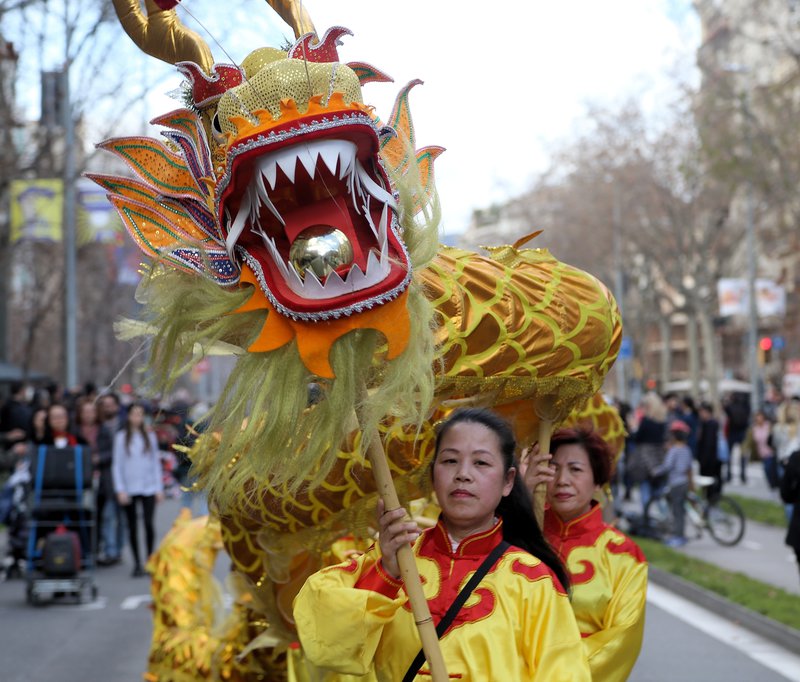THE LAST WORD
CROSSING CULTURES
Over the years living in Catalonia, no small amount of my time has been spent standing in crowded streets watching processions of elaborately dressed people dancing, chucking fireworks around or cavorting with props resembling fantastical beasts.
I’ve had sweets thrown at me from decorated floats during Kings’ processions, I’ve been nearly clobbered by trident swinging devils during Festes Major, and almost trampled by Caps Grossos with impaired vision from their oversized papier mache heads.
Somehow I’ve managed to survive it all, despite the odds being against me, as there is no shortage of these traditional outdoor popular cultural events in Catalonia. The Catalans certainly love a good procession.
I saw proof of that last month when I was in Barcelona for the Chinese New Year celebrations held around Parc de l’Estació del Nord and Arc de Triomf. Standing shoulder to shoulder with a host of other onlookers lining the pavements, I watched a succession of groups dressed up in colourful costumes strutting their traditional stuff.
Standing there, it suddenly struck me that Catalan and Chinese culture are more alike than I would ever have imagined, not least in that they share a real enthusiasm for these traditional outdoor festivities that require dressing up and dancing around the streets with dragons and fireworks.
Then there is traditional food, which features heavily in both Chinese and Catalan culture. Whether it be a music festival or a craft fair, I’m not sure I’ve ever been to an outdoor cultural event in Catalonia that has not included stalls selling a variety of traditional delicacies from embotits to fideua. During the Chinese New Year celebrations, too, there were stalls along Passeig Lluís Companys selling different Asian food and drink that were doing a roaring trade.
And there are yet more similarities between the two cultures. Barcelona’s Chinese community numbers over 20,000 people and it is built around an extensive network of small private businesses. Catalonia too is a country of small businesses and, like the Chinese, the Catalans have a reputation for possessing a canny entrepreneurial spirit.
Which brings us to martial arts. Over the centuries, China has developed an array of hand-to-hand combat systems, most famously kung fu. These fighting techniques are often based on peasant culture and even the weapons have their origin in agricultural implements.
I guess this is where Chinese and Catalan culture diverge, although with the likes of the falç (sickle), the espardenya (traditional sandals) and the barretina (traditional hat), Catalonia also has a strong peasant tradition. Wouldn’t you just love to see what Catalan martial arts might look like? The mind boggles!
opinion


